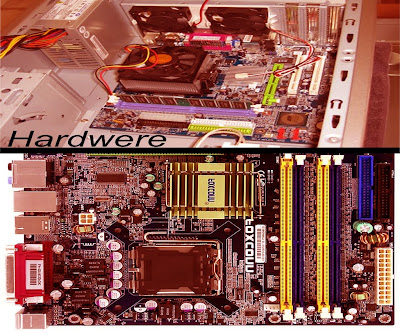The history of computer hardware can be classified into four generations, each characterized by significant technological change. A first boundary could be made between basic hardware it is strictly necessary for the normal operation of the equipment, and complementary, which performs specific functions.
1st Generation (1945-1956) implemented electronic vacuum tube. They were the first machines that displaced the electromechanical components (relays).
2nd Generation (1957-1963) developed electronic transistor. The discrete logic was very similar to the previous one, but the implementation was much smaller, reducing, among other factors, the size of a computer in remarkable scale.
3rd Generation (1964-present): based electronics ICs. This technology allowed integrates hundreds of transistors and other electronic components into a single integrated printed on a silicon wafer circuit. Computers thus considerably reduced cost, power consumption and size, increasing its capacity, speed and reliability, to produce machines such as exist at present.
4th generation (future): Probably it will originate when silicon circuits, high scale integrated, to be replaced by a new type of material or technology.
Another technological breakthrough often used to define the start of the fourth generation is the emergence of integrated circuits VLSI (very large scale integration), in the early eighties. Like the microprocessor, it did not mean the immediate change and the rapid disappearance of computers based on integrated circuits at lower scales of integration. Many implemented with VLSI technologies and MSI (medium scale integration) teams still successfully coexisted well into the 90s.
